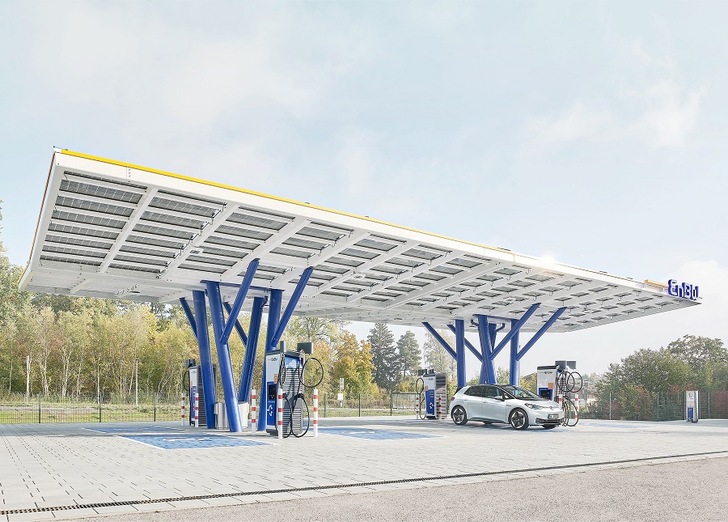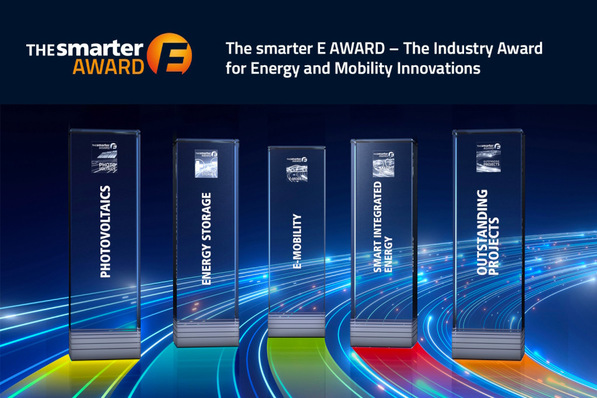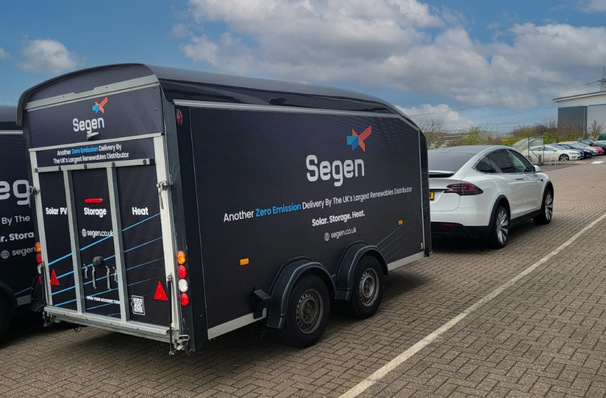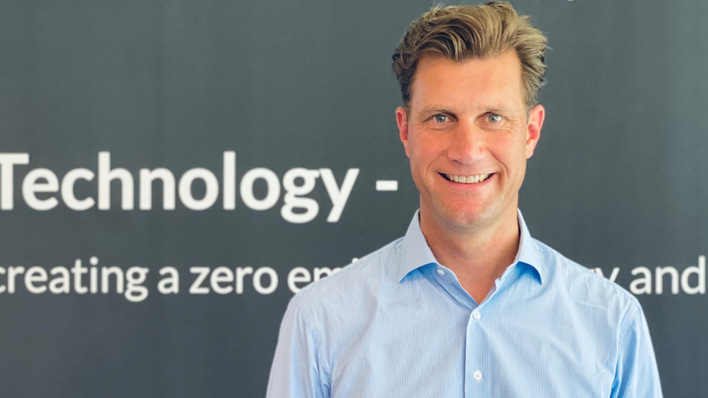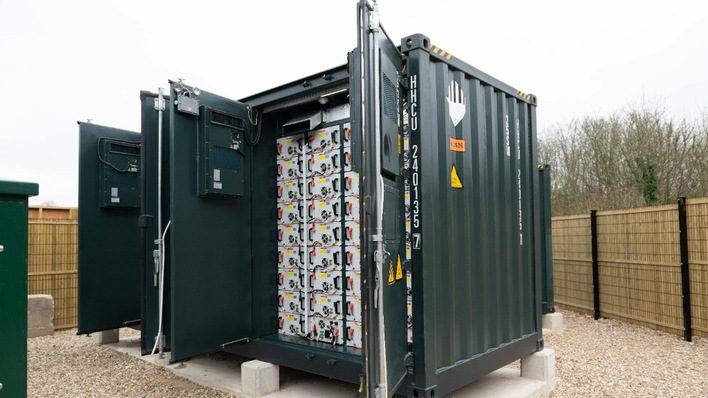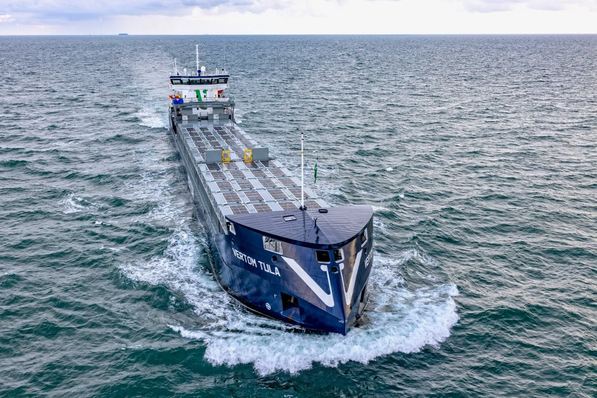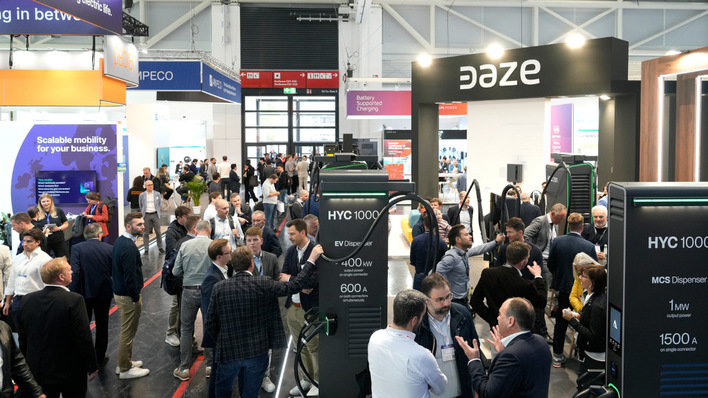Electric car drivers can now top up their range with ultra-fast and convenient charging precisely where they need it. The flagship charging park, which EnBW is opening in Rutesheim/Germany, is showing how this might look in the future: a public and canopied charging park with eight charging points has been built on a greenfield site close to the Leonberg motorway junction just outside Stuttgart.
5 minutes charging time for an extra 100 kilometres
Equipped with an output of up to 300 kilowatts, a vehicle can extend its range here within the shortest space of time using all standard charging connectors (CCS, CHAdeMO and Type 2): in just five minutes, electric cars can get an extra 100 kilometres and their drivers can benefit from real carbon-neutral mobility. That’s because all charging points are supplied with 100% green electricity.
Rooftop PV integrated – public WLAN
The park’s canopy is fitted with a photovoltaic system, which feeds into the local power grid and supplies the location itself with energy. In terms of comfort, the new EnBW charging park is also showing how modern charging infrastructure is evolving: a large canopy offers shelter from the elements at all times and appealing lighting and video surveillance provide peace of mind even when it is dark. A public WLAN makes it possible to send a quick email or enjoy some entertainment while the vehicle is charging.
Read more: Introducing a fast and an ultra-fast EV charger
Especially developed cable systems for easy handling
Cable systems specially developed by EnBW make the cable routing and thus the handling during the charging process particularly comfortable. Besides locations in car parks or in places where people do their shopping, charging parks like the one in Rutesheim make electric mobility especially convenient to use and are being built by EnBW throughout Germany:
Comfort and sustainability
“We are totally committed to and passionate about electric mobility. That is why our customers who use our quick-charging points will only get electricity from regenerative sources, because it is the only way of making sure that the mobility transition is actually also sustainable. And we offer our customers real charging comfort on a park with a motorway service area,” explains Timo Sillober, Chief Sales and Operations Officer at EnBW, who is also responsible for electric mobility.
Modular design – capacity for up to 16 charging points
The charging park has a modular structure, which means that it is already perfectly equipped for the further rise in electric vehicles on Germany’s roads. Its capacity can be flexibly doubled to up to 16 charging points. As a general contractor, the service division of Group subsidiary Netze BW planned and built the park and is also responsible for operating it. The quick-charging infrastructure is being expanded at high speed.
Watch our videos: Electric mobility: Installation and integration of charging systems and electric vehicle
Over 400 quick charging locations nationwide
With over 400 locations nationwide, EnBW operates the largest quick-charging network for electric mobility. The strategic focus here is on state-of-the-art quick-charging locations in the course of further expanding the company’s own nationwide charging infrastructure. The company is using them to bring ultra-fast charging along motorway routes and in city centre locations to precisely the places where electric vehicle drivers need it.
Expanding network – fast commissioning
The Rutesheim site will be the third large quick-charging location that EnBW has commissioned within the space of just one month: at the start of September, it opened Germany’s first urban quick-charging park in Stuttgart city centre as part of the “USP-BW” pilot project in conjunction with the state of Baden-Württemberg. Another 15 locations are being planned across the state. A few days later, this was followed by the first motorway service area in Germany to have quick-charging points for electric cars standing side by side with conventional fuel pumps, realised in cooperation with Tank&Rast at Werratal services in Hessen.
100 million euros annually investment
By 2025 alone, EnBW will have invested approximately 100 million euros annually in further expanding its quick-charging infrastructure and, on average, is commissioning one new quick-charging location every day. Additional quick-charging parks, whether in urban settings or along transport axes, are already being planned. “Sustainable mobility plays a key role in climate protection. We have built the EnBW HyperNetz so that more and more people can make the switch to an electric car. What’s more, with our own locations such as the flagship charging park in Rutesheim, we are making sure that the charging process is a comfortable experience,” summarises Sillober.
About the EnBW HyperNetz
The EnBW HyperNetz gives electric vehicle drivers access to the largest charging network in Germany, Austria and Switzerland, in addition to more than 100,000 charging points in six European countries (including the Netherlands, France and Italy). Already named “Best Electric Mobility Provider” (Connect Test 06/2020) with the most charging points in D-A-CH (E-Mobility Excellence Study 08/20), the company’s nationwide quick-charging locations, currently numbering around 450, are set to increase in number to over 1,000 locations by 2021.
Did you miss that? EnBW wants to be climate-neutral by 2035
By pursuing this course with the company’s own quick-charging infrastructure and integrating additional European countries, the EnBW HyperNetz continues to experience strong growth. The company is complementing its charging infrastructure activities with Germany’s most popular app for electric mobility, the EnBW Mobility+ app. It always finds the nearest charging option, displays ultra-fast charging options and facilitates convenient, contactless payment for the charging process. (hcn)


